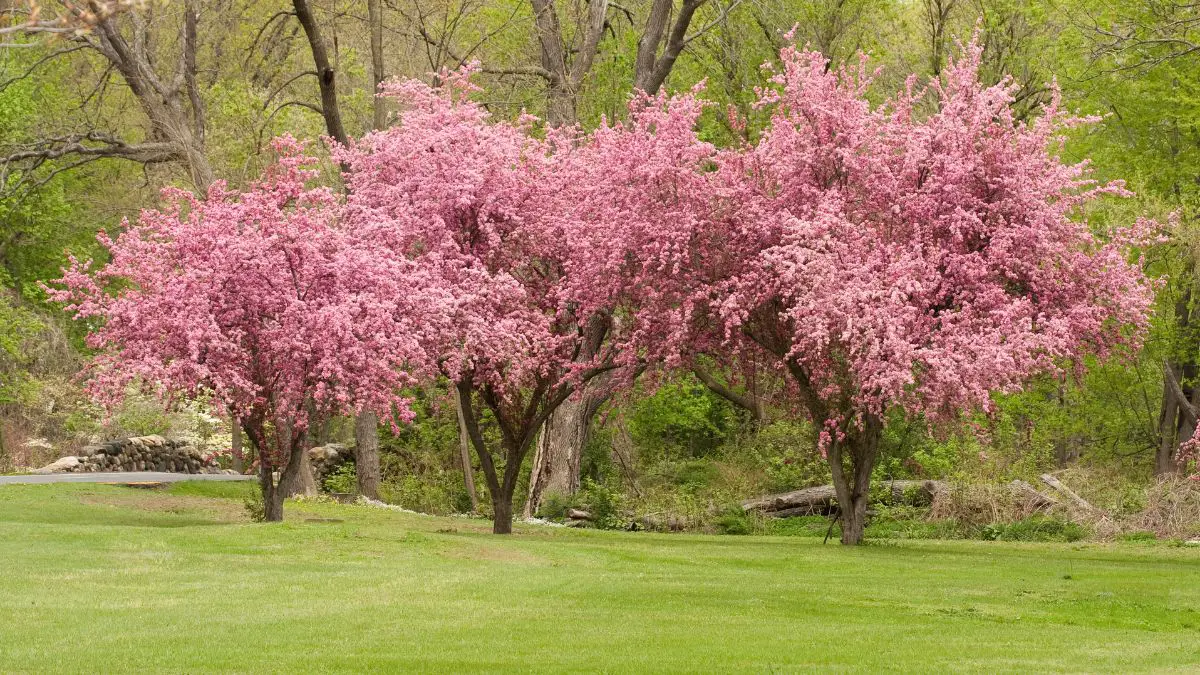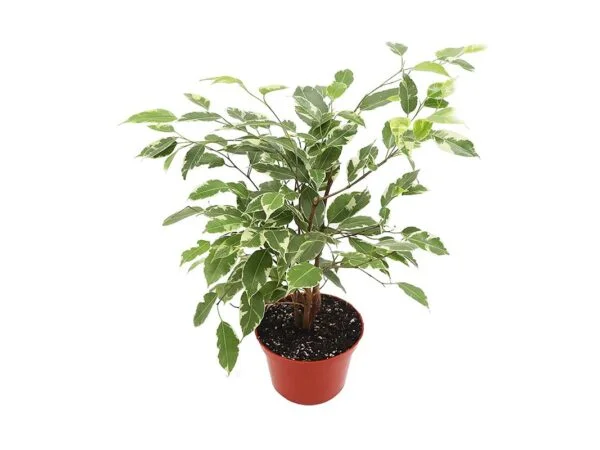Curious about pruning your crabapple trees during the summer months? While typically recommended in late winter or early spring, summer pruning can offer benefits like reduced sap loss and quicker wound healing in gardening. Contrary to popular belief, trimming during this season can help manage growth and maintain tree health. By understanding the best practices for summer pruning, you can promote fruit production, shape your crabapple trees effectively, and cut branches like a professional gardener. Stay tuned to discover the dos and don'ts of summer pruning for vibrant and flourishing crabapple trees.
Key Takeaways
- Timing Matters: Pruning crabapple trees in summer can be done but requires careful consideration of the tree's growth stage and health.
- Preparation is Key: Before pruning, ensure you have the right tools, knowledge of tree anatomy, and a clear plan of action.
- Different Approaches for Different Trees: Established and young crabapple trees may require different pruning techniques, such as cut, to promote healthy growth.
- Train for Success: Proper training of crabapple trees from a young age can lead to a structurally sound and visually appealing tree in the future.
- Expert Advice Goes a Long Way: Incorporating expert pruning tips can help you achieve optimal results and avoid common mistakes.
- Consistent Care is Essential: After pruning, ongoing care and maintenance are crucial to support the tree's health and vigor.
Understanding Timing
Importance of Timing
Summer pruning of crabapple trees should be timed carefully to optimize growth and flowering. Consider the tree's growth patterns for the best results. Timing directly impacts future growth and blooming, ensuring the tree remains healthy and vibrant.
Summer Pruning Basics
To effectively prune crabapple trees in summer, master key techniques that promote tree health. Explore how summer pruning enhances the tree's appearance by shaping its structure. Summer pruning influences both the aesthetics and overall growth pattern of the tree.
Preparing for Pruning
Tools and Safety
To safely and effectively prune crabapple trees in the summer, you will need a few essential tools. These include pruning shears, loppers, and a pruning saw for larger branches. Ensure that your tools are sharp to make clean cuts without damaging the tree. Follow safety guidelines by wearing protective gloves and safety glasses to prevent injuries from thorns or falling debris. Properly maintain and store your pruning tools after use to prolong their lifespan and ensure optimal performance.
Assessing Tree Health
Before embarking on summer pruning, it is crucial to assess the overall health of your crabapple trees. Look for signs of disease, such as discolored leaves or unusual growth patterns. Check for pest infestations, which can weaken the tree and hinder its growth. Inspect the tree for any structural weaknesses, such as cracks in branches or the trunk. If you are unsure about the health of your tree, consider consulting with a professional arborist who can provide a thorough assessment and recommend appropriate actions.
Pruning Established Trees
Trimming Techniques
To maintain crabapple trees in the summer, master various trimming techniques. Use precision cutting for healthy regrowth. Experiment with different styles to enhance the tree's visual appeal.
- Explore pruning methods like thinning cuts and heading cuts.
- Avoid heavy pruning during summer to prevent stress on the tree.
- Trim branches at a 45-degree angle just above a bud or lateral branch.
Maintenance Tips
For optimal tree health, implement regular maintenance practices. Adjust pruning frequency based on growth. Provide proper fertilization and watering schedules to support overall tree well-being.
- Regularly inspect trees for signs of disease or pest infestations.
- Prune dead or damaged branches promptly to prevent further issues.
- Apply a balanced fertilizer in early spring to promote healthy growth.
Pruning Young Trees
Growth Support
Young crabapple trees require necessary support for healthy growth. Stakes or ties can stabilize tree trunks, preventing structural issues. Implement growth-promoting techniques to enhance tree vigor and overall health.
Shape Development
During summer pruning, focus on shaping crabapple trees to achieve desired forms. Emphasize balanced canopy development for pleasing aesthetics. Experiment with different shaping methods to create unique tree silhouettes.
Training Crabapple Trees
Structural Training
Train young crabapple trees by shaping their branches for strength and resilience. Prune to ensure even weight distribution, preventing breakage. Encourage natural branching patterns through strategic training methods.
- Pros:
- Strong branch structures.
- Prevents breakage.
- Promotes healthy growth.
- Cons:
- Requires regular maintenance.
- Time-consuming process.
Seasonal Adjustments
Adjust pruning techniques based on seasonal changes in tree growth. Consider weather conditions' impact on summer pruning outcomes. Modify schedules to suit seasonal variations in tree behavior.
- Prune young crabapple trees to develop resilient branches.
- Ensure even weight distribution to prevent branch breakage.
- Encourage natural branching patterns for healthy growth.
Expert Pruning Tips
Avoiding Common Mistakes
Pruning crabapple trees in the summer can lead to common mistakes if not done correctly. One mistake is over-pruning, which can stress the tree and hinder its growth. Another error is cutting branches too close to the trunk, leading to decay and disease. To avoid these mistakes, ensure you prune conservatively and maintain a balanced canopy.
Improper pruning techniques during summer can have detrimental effects on the health of crabapple trees. By learning from past pruning errors, gardeners can improve their future practices. Understanding the repercussions of improper pruning, such as reduced flowering or increased vulnerability to pests and diseases, is crucial for maintaining tree health.
Enhancing Tree Vitality
Strategic pruning methods play a vital role in enhancing the overall vitality of crabapple trees. By removing dead or diseased branches, you promote tree resilience and longevity. Prioritizing tree health in your pruning decisions ensures that the tree remains strong and vigorous.
Optimizing pruning practices is essential to support the growth and flowering potential of crabapple trees. Regular maintenance pruning helps maintain a balanced canopy and encourages new growth. By promoting proper air circulation within the canopy, you reduce the risk of fungal infections and pest infestations.
Aftercare and Maintenance
Post-Pruning Care
Implement post-pruning care routines to aid in the recovery and growth of crabapple trees. Ensure that the trees receive adequate sunlight for photosynthesis post-pruning.
Seasonal Considerations
Hot vs Cold Pruning
When it comes to hot and cold pruning for crabapple trees, the key distinction lies in the timing. Summer pruning falls under hot pruning, while winter pruning is considered cold. Hot pruning during summer involves trimming actively growing branches to shape the tree and encourage new growth. On the other hand, cold pruning in winter focuses on removing dead or damaged branches to promote overall tree health.
While summer pruning can stimulate rapid growth due to increased sap flow, it also exposes the tree to potential sunburn and stress from heat. In contrast, winter pruning minimizes these risks as the tree is dormant, reducing the chances of disease transmission through open wounds. However, winter pruning may result in slower healing due to lower metabolic activity in colder temperatures.
Pros of hot pruning include immediate results with visible new growth and enhanced flowering potential. However, cons include increased vulnerability to pests and diseases during active growth periods. Conversely, cold pruning's benefits lie in reduced stress on the tree during dormancy and better wound recovery. Yet, drawbacks include limited visibility of changes until spring growth resumes.
Adapting to Weather Conditions
During summer, adapting your pruning techniques based on weather conditions is crucial for maintaining tree health. High temperatures can lead to excessive moisture loss through freshly cut branches, risking dehydration and stress for the tree. Humidity levels impact wound healing; moist conditions may promote fungal infections post-pruning.
Consider adjusting your pruning schedule to cooler parts of the day or days with milder weather to minimize stress on the tree. Shielding freshly pruned areas from direct sunlight can prevent sunscald and reduce water loss. Implementing proper watering practices post-pruning can aid in recovery by ensuring adequate hydration for the tree.
- Prune early morning or late evening
- Shield pruned areas from direct sunlight
- Monitor humidity levels post-pruning for fungal risks
Summary
You've learned the ins and outs of pruning crabapple trees in the summer. Timing is crucial, so make sure you're ready to tackle this task with the right preparation. Whether you're dealing with established or young trees, following expert tips and considering seasonal factors will ensure your trees thrive. Remember, proper aftercare and maintenance are key to keeping your crabapple trees healthy and beautiful year-round.
Now that you're equipped with the knowledge to prune your crabapple trees effectively, go ahead and put these insights into action. Your trees will thank you for the care and attention, rewarding you with vibrant blooms and robust growth. Happy pruning!
Frequently Asked Questions
Can crabapple trees be pruned in the summer?
Yes, crabapple trees can be pruned in summer, but it's best to avoid hot days. Summer pruning is ideal for shaping and removing dead or diseased branches. Avoid heavy pruning during this season to prevent stress on the tree.
How do I prepare for pruning my crabapple tree?
Before pruning your crabapple tree, ensure you have sharp, clean tools like hand pruners and loppers. Familiarize yourself with the tree's growth patterns and potential issues. Always prioritize safety by wearing appropriate gear like gloves and eye protection.
When should I prune an established crabapple tree?
Prune established crabapple trees during late winter or early spring while they are dormant. This timing promotes new growth once the growing season begins. Focus on removing dead, damaged, or crossing branches to improve air circulation and sunlight penetration.
Is there a specific way to prune young crabapple trees?
When pruning young crabapple trees, focus on shaping them for proper structure and form. Remove any competing branches or those growing inward. Aim to create an open canopy that allows light and air to reach all parts of the tree, promoting healthy growth.
What are some expert tips for pruning crabapple trees?
Always start by removing dead, diseased, or damaged branches before addressing other areas. Use proper pruning techniques such as making clean cuts just above a bud or lateral branch. Avoid over-pruning to maintain the tree's overall health and vitality. Regularly inspect your tree for any signs of issues.
How should I care for my crabapple tree after pruning?
After pruning your crabapple tree, monitor its progress regularly. Water appropriately during dry periods and apply mulch around the base to retain moisture. Refrain from fertilizing immediately after pruning to allow the tree time to recover naturally from the process.
What seasonal considerations should I keep in mind when pruning a crabapple tree?
Consider the specific needs of your crabapple tree based on the season when planning your pruning schedule. Late winter/early spring is ideal for major shaping, while lighter maintenance pruning can be done in summer if necessary. Avoid fall pruning as it may stimulate new growth susceptible to frost damage.
Image Source: Paid image from CANVA



